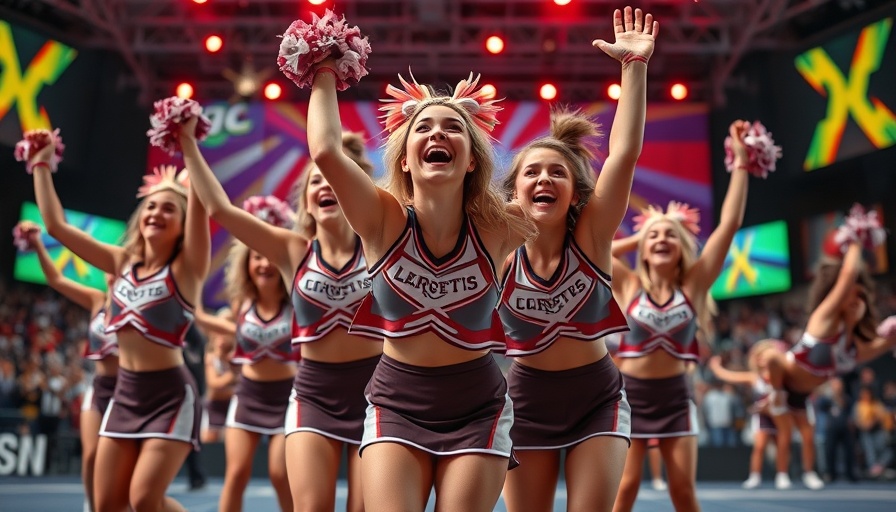
Understanding Cheer Safety: A Broader Perspective
August is celebrated as National Cheer Safety Month, a time to shine a light on the vital aspects of safety for cheer athletes. While much emphasis is placed on injury prevention, it is crucial to recognize that safety extends far beyond physical injuries. This year, the theme promotes a comprehensive approach to ensuring cheerleaders not only avoid injuries but also thrive in a supportive, inclusive environment.
Body Positivity and Confidence: Foundations of Safety
Building a foundation of body positivity within the cheer community is essential for creating safe environments. USA Cheer is spearheading initiatives promoting inclusive uniform guidelines that cater to the diverse body types of athletes. This empowerment plays a crucial role in developing their confidence, allowing cheerleaders to focus on their performance without fear of judgment. In parallel, martial arts instructors can draw inspiration from these concepts, emphasizing body confidence in both practice and competition, ensuring their students feel comfortable and valued.
Fostering Respect: Tackling Hazing and Bullying
Integral to a safe sporting environment is the necessity of preventing hazing and bullying. Coaches are encouraged to actively cultivate a culture rooted in respect and kindness. Open discussions about harmful practices can discourage negative behavior and promote solidarity within teams. Similarly, martial arts schools should adopt strict anti-bullying policies and create a culture where every student feels secure, without the fear of being targeted by peers.
Recognizing Risks: Abuse and Misconduct in Focus
Awareness and education about potential abuse are crucial components in keeping athletes safe. Coaches, gym owners, and parents must recognize the signs of inappropriate behavior and understand the reporting process. Preparation is key, and having clear guidelines can help mitigate issues before they escalate. This applies equally within martial arts settings, where instructors must educate themselves and their students about boundaries and maintaining respectful relationships.
Prevention Strategies: Lessons for Martial Arts
Just as cheerleading organizations implement injury prevention strategies, martial arts instructors must prioritize comprehensive safety protocols. Establishing conditioning routines aimed at injury reduction, such as flexibility training and muscle conditioning, plays a significant role in athlete safety. Programs that incorporate sport-specific safety techniques can enhance resilience, prepare students for physical challenges, and reduce risks of injury during practices and competitions.
Creating a Culture of Inclusion: Value Beyond Safety
Creating supportive spaces isn’t just about avoiding injury; it’s about ensuring every athlete feels a sense of belonging. In cheerleading and martial arts, the goal should be to uplift each individual, fostering an environment where everyone can excel. This encourages personal growth and helps instill a sense of community that extends beyond physical training, promoting mental resilience alongside physical prowess.
Conclusion: Advocating For Comprehensive Safety
As we observe National Cheer Safety Month, it is vital to embrace a broader perspective on safety in all youth sports, including martial arts. Emphasizing body positivity, preventing bullying, and understanding potential risks form the framework of a healthy training environment. Implementing effective injury prevention techniques can enhance athletic performance while addressing their physical and emotional well-being. Together, let’s champion a culture of safety that nurtures athletes' growth, health, and happiness.
Join the conversation and become an advocate for safety within your community! Understanding and implementing these guidelines can foster a positive experience in sports for all athletes.
 Add Row
Add Row  Add
Add 




Write A Comment